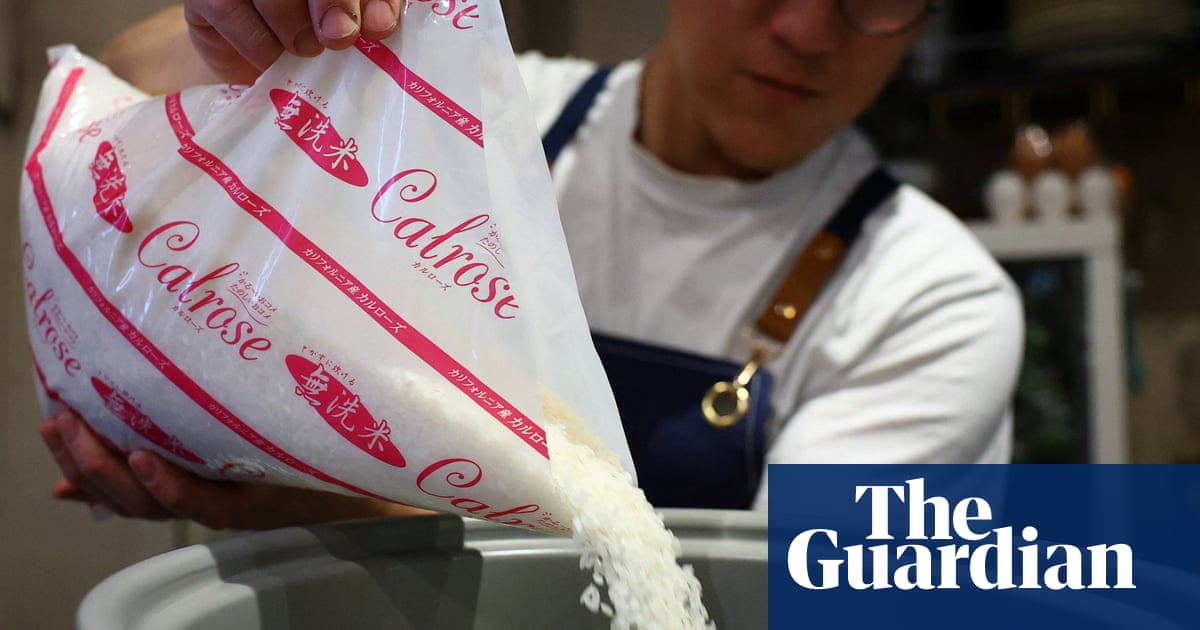
Take a look at our newest merchandise
Japan’s authorities is battling record-low approval rankings as customers voice anger at hovering rice costs simply weeks earlier than key nationwide elections.
Makes an attempt to carry down the value of the Japanese staple have had little impact, prompting requires a discount within the consumption (gross sales) tax to ease the cost-of-living disaster.
A brand new ballot by the Kyodo information company discovered that customers blamed the administration of the prime minister, Shigeru Ishiba, for rising strain on family funds.
Approval rankings for Ishiba’s cupboard stand at 27.4%, in response to the ballot, the bottom since he took workplace final October and a dip of greater than 5 share factors up to now month, Kyodo mentioned.
Ishiba’s ruling Liberal Democratic occasion (LDP) has thus far dominated out a lower within the 10% consumption tax, which guarantees to be a focus of higher home elections in July.
Ishiba is already below strain after the LDP and its junior coalition companion misplaced their decrease home majority final autumn. Vital losses within the higher home will solely add to calls from opponents contained in the occasion for him to go.
Virtually three-quarters of respondents mentioned the tax, which is levied on a variety of products and companies, must be lower “just for meals objects”, “for all merchandise” or be abolished altogether, the ballot discovered.
Extra worrying for Ishiba, simply over 87% of respondents mentioned authorities efforts to rein within the value of rice had been “inadequate”, whereas greater than 74% mentioned they didn’t count on ongoing US-Japan tariff talks – together with negotiations on American imports of rice and different foodstuffs – to finish favourably to Japan.
Earlier this yr Ishiba’s authorities took the weird step of dipping into its huge rice reserves. In March it started releasing stockpiled rice in an try to arrest value rises which were blamed on a mix of things, together with larger demand fuelled partially by the tourism growth, distribution bottlenecks, and suspected hoarding by wholesalers and distributors in anticipation of additional shortages.
However the transfer, which is often reserved for shortages brought on by pure disasters and crop failures, didn’t have the specified impact, with costs of home rice falling solely marginally.
The worth of rice offered in supermarkets averaged ¥4,214 ($29) for 5kg through the week to 4 Could, in response to the agriculture ministry. That’s ¥18 cheaper than the all-time excessive recorded per week earlier, however nonetheless round double the value on the similar time final yr.
In response, the federal government mentioned final week it might double the provision of stockpiled rice, with an extra 300,000 tons due for launch within the three months to July, media studies mentioned. That’s on prime of 300,000 tons that has already been launched from emergency stockpiles since March. As well as, a number of the rice will bypass wholesalers so it may well attain outlets extra shortly.
The mounting rice disaster has compelled extra Japanese eating places and customers to show to cheaper imports. In April, Japan imported South Korean rice for the primary time in 1 / 4 of a century.
Final week, the grocery store chain Aeon mentioned it might begin promoting US-produced Calrose rice from early subsequent month. A 4kg bag will price about 10% lower than Japanese rice.





![[2024] MSI Aegis R2 C14NUF9-829US (Intel Core i9-14900F, 128GB DDR5 RAM, 2X 2TB NVMe SSD, NVIDIA GeForce RTX 4070 Ti Super, Windows 11) Gaming Desktop PC](https://m.media-amazon.com/images/I/81i1KVslX4L._AC_SL1500_.jpg)







